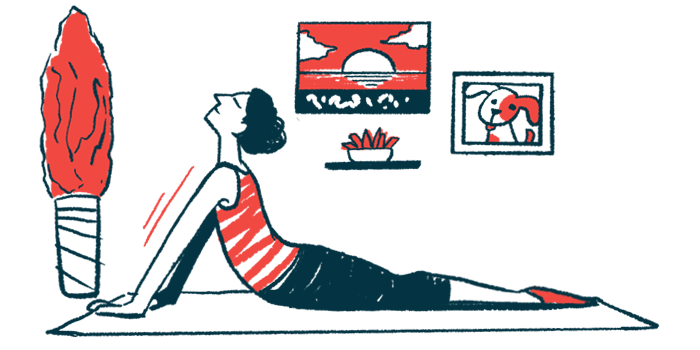Exercise Program Improved Muscle, Physical Function

Muscle and physical function improved in patients with clinically stable myasthenia gravis (MG) who participated in an individually tailored six-month exercise program, a small study has found.
The exercise program, which combined aerobic and resistance training with stretches, was well-tolerated by all participants.
“Physical exercise is safe, effective, and appropriate for patients with well-regulated MG,” the study authors wrote.
The study, “Changes in physical fitness and body composition associated with physical exercise in patients with myasthenia gravis: a longitudinal prospective study,” was published in the Journal of Clinical Medicine by a team of researchers in Taiwan.
MG patients experience periods of muscle weakness due to an autoimmune attack on certain proteins involved in nerve-muscle communication. After exercise, in particular, muscles may become unusually tired and weak.
However, there is evidence suggesting exercise actually may ease fatigue and help build muscle strength. A well-planned exercise program can help patients maintain physical capacity, allowing them to carry out daily activities with greater ease.
Nevertheless, “how physical exercise affects body composition, disease function, and disease severity remains unknown,” the researchers wrote.
In an effort to learn more, investigators conducted a study enrolling 35 patients with clinically stable MG, who had been on the same medication regimen for at least six months. There were 13 men and 22 women in total, with a mean age of 56 years and an average disease duration of 12 years.
According to the Myasthenia Gravis Foundation of America (MGFA) scale, a tool used to assess MG severity and clinical features, 21 patients (60%) had type II MG (mild muscle weakness) and 14 patients (40%) had type III MG (moderate muscle weakness).
Researchers designed an exercise program based on general recommendations for healthy adults. Each session started with a five-minute warm-up, followed by seven workout cycles of three minutes each, and a final five-minute period to cool down, lasting a total of about 30 minutes.
Workout exercises included squats, sit-to-stand exercises, arms-out stretches, squat jumps, sprinting in place, and exercises using one’s own body weight. These were followed by a set of stretching exercises. Training intensity was adapted to each patient’s physical capacity.
All patients were instructed to complete one monthly session under the supervision of a researcher. Then, they were told to exercise at home as many times and for as long as they wanted. As part of the study, they were asked to keep a record of the number of sessions completed, as well as their duration.
To evaluate the effects of the exercise program, researchers evaluated several clinical and physical measures before and after the completion of a training period of 24 weeks (about six months).
Grip strength — a measure of the amount of strength a person can put out — increased for both the right and left hands and the total QMG score. That quantitative measure of disease severity decreased from 10.5 to 9.0.
Body composition did not change with the exercise program. That outcome was assessed using whole-body dual-energy X-ray absorptiometry (DXA), an imaging test that can be used to measure bone density, as well as the amount of muscle mass and fat, by passing X-rays with two different energy levels through the body.
Patients engaged in a median of three exercise sessions per week and spent a median of 56 minutes (nearly one hour) exercising per week.
When researchers divided patients into two groups according to whether they exercised above or below the weekly median, they found that patients who exercised more also lost more muscle mass in the arms. However, they also experienced greater improvements in forced vital capacity — a measure of lung function — and walking speed compared with people who exercised less each week.
In the group of patients who exercised more, the total QMG score decreased from 9.4 to 6.6, indicating an amelioration in symptom severity. This improvement was not seen in the group of patients who exercised less often.
Researchers also divided patients into two other groups based on disease severity, as assessed by the total QMG score. They found that patients with a QMG score of 10 or less experienced greater improvements in walking speed compared with those who had a QMG score greater than 11.
“The results demonstrate that physical exercise can be safe and beneficial for functional outcomes among patients with MG,” the researchers wrote.
“Given the lack of an established and effective exercise plan for patients with MG, it is necessary to develop an exercise plan to enhance the exercise function of these patients, and whole-body DXA could be a potential tool for monitoring the outcomes of patients with MG after exercise training,” they concluded.








Leave a comment
Fill in the required fields to post. Your email address will not be published.